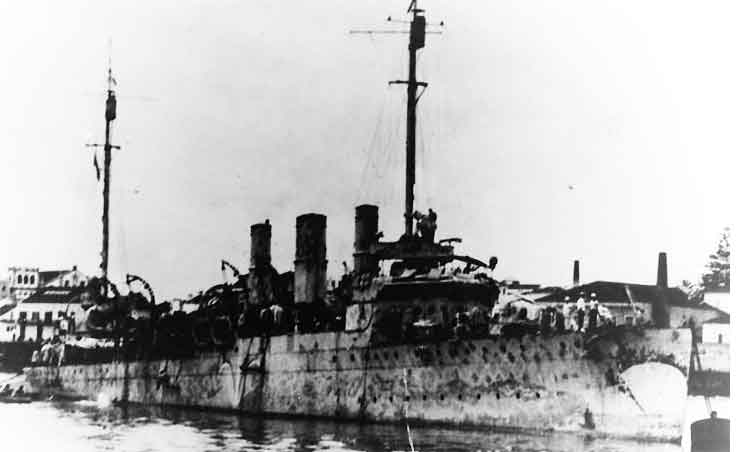Conner DD- 72
A
Conner
David Conner, born in 1792 in Harrisburg, Pa., was appointed a midshipman 16 January 1809. During the War of 1812 Conner served in Hornet during her chase of HMS Belvedere and her actions with HMS Peacock and HMS Penguin, during the latter of which he was wounded. He served as a Navy Commissioner in 1841 and 1842, and upon the establishment of the bureau system in the Navy became the first Chief of the Bureau of Construction, Equipment, and Repair. During the Mexican War, he commanded the Home Squadron which operated in the Gulf of Mexico in 1846 and 1847 and executed a brilliant amphibious assault against Vera Cruz. Commodore Conner died 20 March 1866 in Philadelphia.
(DD-72: dp. 1,126; 1. 316'6"; b. 31'3"; dr. 8'1"; s. 30 k.;
cpl. 100; a. 4 4", 12 21" tt.; cl. Caldwell)
The first Conner (DD-72), a torpedo boat destroyer was launched 21 August 1917 by William Cramp & Sons Ship and Engine Building Co., Philadelphia,Pa.; sponsored by Miss E. Diederich, and commissioned 12 January 1918, Commander A. G. Howe in command.
Conner put to sea from New York 12 May 1918 to escort a convoy to the Azores and Brest, France. From Brest, she operated with U.S. Naval Forces, France escorting convoys inbound to English and French ports and outbound for Bermuda. Frequently sent to aid ships which had reported sighting submarines, she rescued survivors from the sea twice in July 1918. At the end of the war, she had duty on regular mail and passenger runs between Brest and Plymouth, England, and on 8 May 1919 she put out from Plymouth escorting the ships carrying President Woodrow Wilson and Secretary of the Navy Josephus Daniels to Brest for the Peace Conference.
Returning to the United States, Conner joined in fleet maneuvers in Narragansett Bay in the summer of 1919, and entered Philadelphia Navy Yard 4 October. Later she lay at Norfolk in reserve until May 1921, when she participated in large-scale fleet exercises with a reduced complement. She remained at Newport, R.I., for operations with submarines. Between 13 October 1921 and 29 March 1922, she lay at Charleston, S.C., returning then to Philadelphia, where she was decommissioned 21 June 1922.
Conner was recommissioned 23 August 1940 and fitted out at Philadelphia. Designated for inclusion in the destroyer land bases exchange with Great Britain, she sailed to Halifax, N. S., where she was decommissioned 23 October 1940 and transferred to Britain and commissioned in the Royal Navy as HMS Leeds the same day, Lieutenant Commander W. M. I. Astwood, RN, in command.
Leeds cleared Halifax 1 November 1940 for Belfast, Northern Ireland arriving 10 November. Under the Rosyth Command she escorted convoys in the North Sea between the Thames and the Firth of Forth, successfully weathering many air attacks. On 20 April 1942, she went to the aid of mine-damaged destroyer HMS Cotewold, towing her into Harwich. She drove German E-boats away from her convoy on the night of 24-25 February 1944. Leeds was placed in reserve at Grangemouth in the Firth of Forth in April 1946.
 >
>